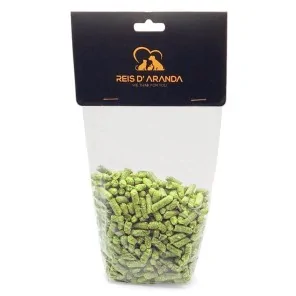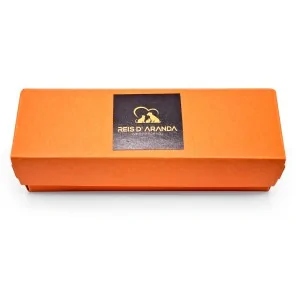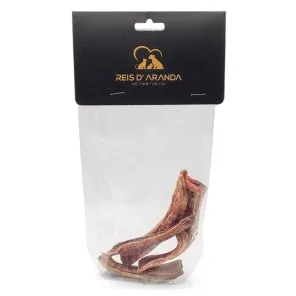Its name says it all: the Vienna blue rabbit comes from Austria. Not only is it beautiful with its shiny blue-grey...
THE NEW ZEALAND RABBIT
INTRODUCTION
New Zealand rabbits are one of the largest and stoutest breeds of rabbits in the world. These giant rabbits are very calm and gentle, being famous for their relaxed and friendly nature.
These rabbits have spread throughout the world, reaching almost every country.
THE ORIGIN OF THE NEW ZEALAND RABBIT
The New Zealand breed of rabbits appeared in the United States in 1910, not in New Zealand. Presumably, Belgian hares and silver (grey) rabbits were crossed to produce a new breed. The result is a red rabbit of the New Zealand breed. They were distinguished by excellent characteristics which suited most rabbit breeders. After a while, albino rabbits started to appear in the litters. These representatives were soon bred into a separate breed: the New Zealand White Rabbit (NZB).
Breeders did not stop at the result achieved and crossed the New Zealanders with the Angora breed and chinchilla rabbits. In the late 1960s, New Zealand black rabbits were obtained.
WHAT IS THE NEW ZEALANDER LIKE?
BODY TYPE, SHAPE AND CONSTRUCTION: The body is compact (blocky), broad, muscular, very strong. The back and croup are powerful and well rounded.
The legs are strong and short, but a certain ground clearance is required. The tail is firm.
In adult bitches a small well formed dewlap is permissible. But the cleaner the neck the better.
2. WEIGHT:
- NORMAL WEIGHT: 4,00 kg.
- MINIMUM WEIGHT: 3,00 kg.
- MAXIMUM WEIGHT: 5.50 kg.
3. COAT : The coat is of medium length and thick, strong but not harsh and evenly distributed all over the body. The ears are well furnished.
HEAD: The head is short, strongly developed and provided with a broad forehead and muzzle. Close fitting to the body.
- Slight faults: construction of the head different from that described.
- SERIOUS FAULTS: Very strong deviation from the type described. Lack of sexual dimorphism.
EARS: The ears are strong, broad, of a length in accordance with the body, with rounded tips and erect. The ideal length is 10.0 to 11.0 cm.
- MILD FAULTS: Ears thin or wrinkled, somewhat short or long, not appropriate to type and size of body.
- SERIOUS FAULTS: length less than 8.5 or more than 13. Type and carriage completely different from that described.
6. COLOUR AND UNIFORMITY: The main colour is pure bright white and extends without exception over body, head, ears, belly and legs. The colour of the undercoat is white like that of the covering coat. The eyes are bright red and the nails depigmented. Red with brown eyes is also permitted.
- Slight faults: Body colour different from that described. Slight yellowish or greyish tones or reflexes.
- SERIOUS FAULTS: Strong yellow or greyish tones. Lack of gloss. Eyes of a different colour from the one claimed. Coloured nails.
FUNCTIONS OF THE NEW ZEALAND RABBIT
The New Zeeland rabbit is usually used as a meat production animal due to its great fertility, meat quality and rapid arrival at fertile age (around 4 months in females). They are also used as laboratory animals due to their gentle nature, although they are more and more frequently seen as pets and at pet shows, where they can be found in a wide range of colours (REW and red, above all).
WHAT IS THE NEW ZEALAND RABBIT LIKE AS A PET?
Since New Zealand rabbits were developed primarily for meat, they are naturally docile and easy to handle. This makes them excellent pet rabbits for first-time owners, older people, couples or families with small children.
When kept from an early age, New Zealand rabbits get along well with children and make wonderful pets. They even like to be petted and are very laid back, making them fantastic companions for people of all ages.
Unlike most other rabbit breeds, New Zealand rabbits love to spend time with their caregivers and will happily sit on your lap while you pet them. Aggressive tendencies have not been reported in this breed of rabbit and they do not bite when picked up.
It is important to provide a variety of toys that will keep your pet rabbit mentally stimulated and prevent boredom. While rabbits are not the easiest of pets to train, New Zealand bunnies are intelligent and can be potty trained.
As a breed, New Zealand rabbits are relatively healthy and vigorous, so they are generally healthy pets, but there are a few things to keep in mind if you plan to keep a New Zealand rabbit.
Overfeeding can be a big problem for the New Zealand rabbit because they are bred to grow to a large size. Too many treats can make these rabbits overweight and can shorten their lifespan.
CONCLUSION
New Zealand rabbits have a friendly nature, being very sociable and peaceful rabbits. They are never aggressive and are very sensitive and attentive to their loved ones.
Leave a comment
Log in to post comments
















